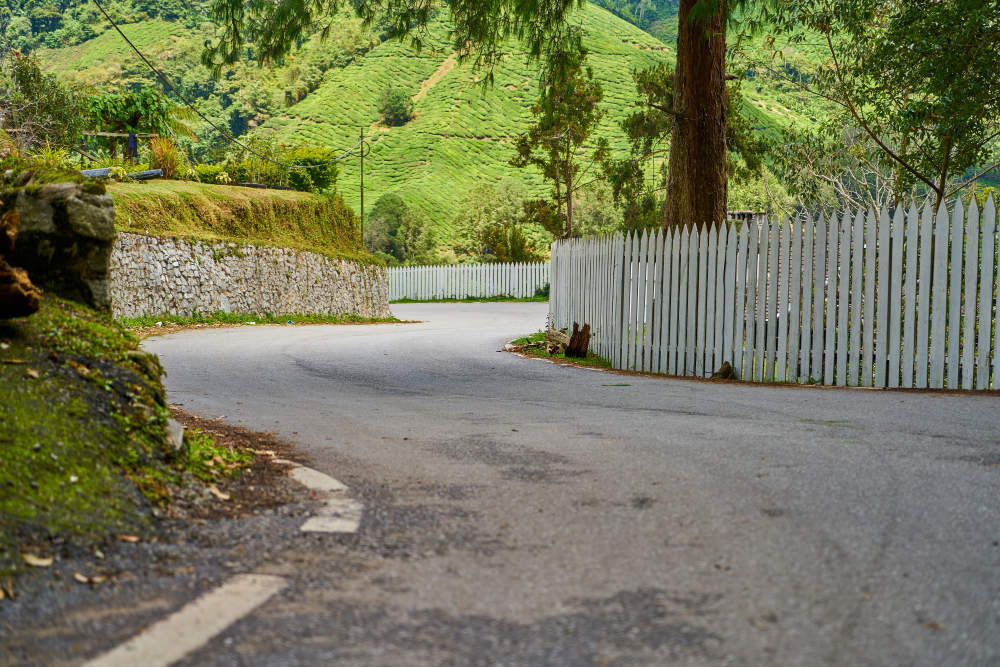
Your driveway is more than just a place to park your car; it’s one of the first things people see when they visit your home. A well-maintained driveway boosts your home's curb appeal and value, while a neglected one can become an eyesore and a safety hazard. Over time, factors like sunlight, rain, and traffic take their toll on your asphalt, leading to deterioration.
One of the most effective ways to protect and preserve your asphalt driveway is through sealcoating. This preventative maintenance process applies a thin liquid layer over the pavement, shielding it from the elements and extending its lifespan. But how do you know when it’s time to sealcoat? This guide will walk you through the key signs that indicate your driveway is ready for this essential treatment, helping you protect your investment for years to come.
Before we explore the warning signs, let's quickly cover what sealcoating is. Sealcoating involves applying a high-quality sealant over your existing asphalt surface. This protective layer acts as a barrier against a range of damaging factors, including:
Sealcoating not only protects your driveway but also restores its rich, black appearance, instantly enhancing your property's curb appeal. Think of it as sunscreen and moisturizer for your asphalt—it keeps it looking good and performing well.
Not sure if your driveway is due for a refresh? Look for these common indicators. If you notice one or more of them, it’s likely time to consider sealcoating.
One of the most obvious signs is a change in color. A new or freshly sealcoated asphalt driveway has a deep, rich black finish. Over time, constant exposure to sunlight causes oxidation, which breaks down the asphalt binder and bleaches the surface. The result is a faded, dull gray color.
This isn't just a cosmetic issue. The graying indicates that the protective top layer of your asphalt has worn away, leaving the underlying structure vulnerable to damage. If your driveway looks more gray than black, sealcoating can restore its color and protective qualities.
Small cracks are a clear warning sign that your driveway is in need of attention. These can appear as thin, web-like "alligator cracks" or as larger, individual fissures. Cracks form as the asphalt becomes brittle from age and oxidation. They allow water to penetrate the pavement's foundation, which is where serious problems begin.
Once water gets into the base layer, it can erode the supporting materials. In climates with freezing temperatures, this water expands and contracts, widening the cracks and leading to potholes. Addressing small cracks early with professional repair and sealcoating is crucial to prevent them from becoming costly structural failures. If you're seeing cracks, it's a sign to act now.
Is your driveway dotted with dark spots from oil, gasoline, or other fluid leaks? These substances are more than just ugly stains; they are solvents that actively dissolve the petroleum-based binders in your asphalt. Over time, these spills will soften and weaken the pavement, leading to crumbling and potholes.
A quality sealant is resistant to oil and chemical spills. If you notice that spills are soaking into your driveway instead of beading up on the surface, it means the existing protective layer has worn off. Sealcoating will not only cover up old stains but also create a barrier that prevents new ones from penetrating the asphalt.
Run your hand over your driveway’s surface (when it’s clean, of course). Does it feel rough and sandy? As asphalt ages, the fine aggregates and sand in the mix begin to unravel from the surface. You might notice loose sand or small stones collecting in certain areas or after it rains.
This process, known as "raveling," indicates that the asphalt binder is losing its strength and can no longer hold the aggregate together. A rough surface is a sign that your driveway is becoming more porous and susceptible to water damage. Sealcoating replenishes the binder at the surface, locking the aggregate in place and restoring a smoother texture.
After it rains, do you notice water pooling in certain areas of your driveway? While some puddles might be due to an uneven foundation, they can also indicate that the asphalt surface is no longer effectively repelling water. An aged, porous surface will absorb moisture rather than allowing it to run off.
These standing puddles accelerate the deterioration process by allowing water more time to seep into the pavement. Sealcoating creates a waterproof membrane that helps water shed off the surface properly, preventing water damage and prolonging the life of your driveway.
Even if there are no glaring signs of damage, the age of your last sealcoat is a critical factor. Generally, it is recommended to sealcoat your driveway every two to four years. The exact frequency depends on factors like your local climate, the amount of traffic your driveway receives, and its exposure to direct sunlight.
Here in Florida, the intense sun and heavy rains can break down sealants more quickly. If you can't remember the last time your driveway was sealed, or if it's been more than three years, it's a good idea to have it inspected. Proactive maintenance is always more affordable than reactive repairs.
A well-maintained driveway is a valuable asset to your home. By recognizing the signs that it's time for sealcoating, you can take proactive steps to protect your investment, avoid expensive repairs, and keep your property looking its best. From a faded color to the first appearance of small cracks, these warning signs are your driveway’s way of asking for a little TLC.
If you’ve noticed any of these issues, don't wait for them to get worse. A professional can assess the condition of your asphalt and recommend the best course of action. If you’re looking for professional sealcoating in Daytona Beach, FL, our team is here to help. Contact Florida Sealcoating today for a free, no-obligation estimate and give your driveway the protection it deserves.